The Woodstock of Self-Driving
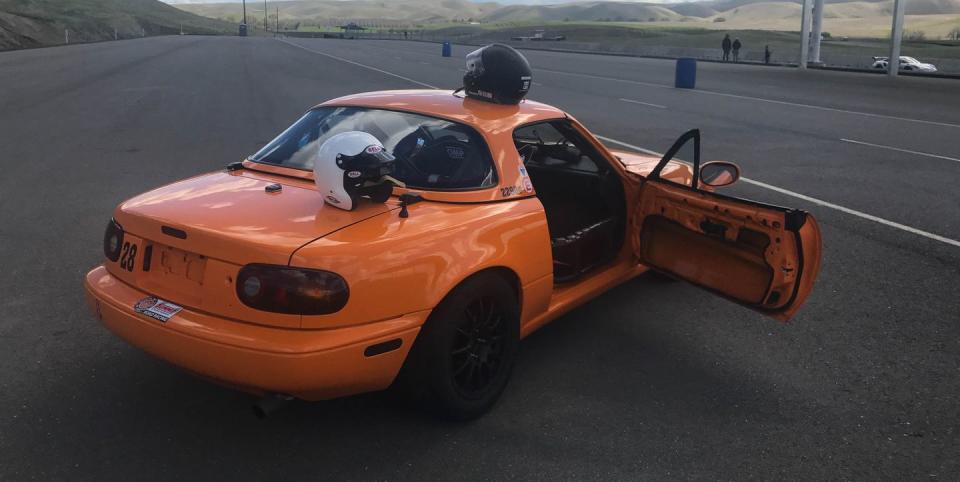
On the eve of a two-day competition that gave anyone from hobbyists to leading industry suppliers a chance to test their self-driving mettle on a Northern California racetrack, circumstances conspired against one promising team of students.
First, the group lost its car. Upon arriving at Thunderhill Raceway, about three hours north of San Francisco, they learned their school’s autonomous-vehicle prototype was needed at a separate showcase. A backup plan to borrow another car fell through. The students were from Udacity, an online-education company that specializes in computer-science nanodegrees, and they had traveled from as far away as Germany and Poland for this event, billed as Self Racing Cars, so this was no small problem.
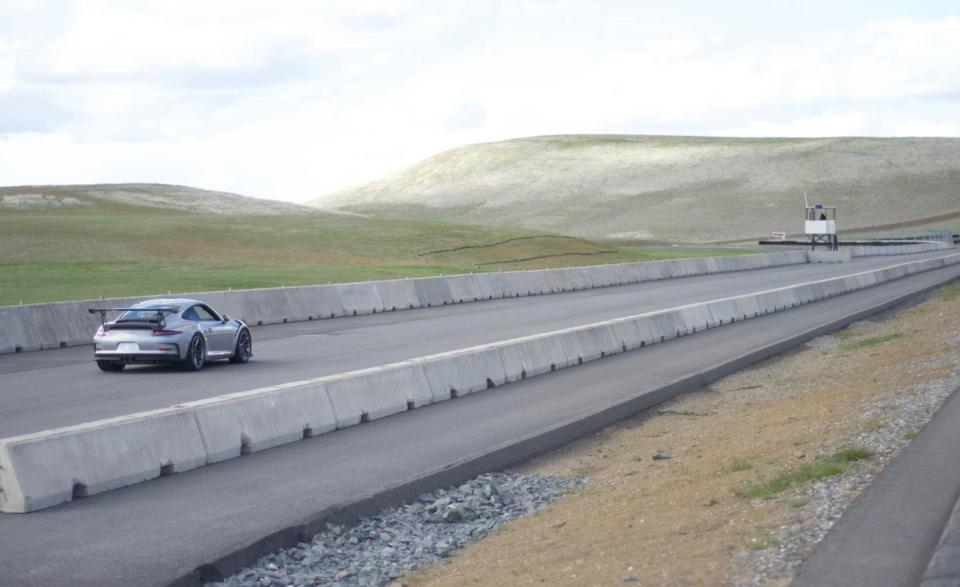
Ingenuity is something of a prerequisite among the assembled mix of engineers, startup founders, car enthusiasts, and venture capitalists. Perhaps it is the only prerequisite. Within a few hours, a sympathetic competitor loaned a Toyota Prius to the group for the weekend. The Prius may not seem like a racetrack stalwart, but for the purposes of this particular competition, it was a lucky find. Its control systems are easily accessed and manipulated, making it a popular choice among these competitors.
For Udacity’s team, finding a viable car was the first hurdle-but not the only one.
“We also didn’t come up with a camera,” said Anthony Navarro, an instructor for the Udacity group who works in robotics and self-driving vehicles for the company. Running an automated system in a car without sensors would be akin to driving blind. So once they obtained the Prius, the Udacity team headed to a nearby Walmart, purchased a $20 Logitech camera, and affixed it to the vehicle. Sensor problem solved, they still readied for their laps with some degree of uncertainty.
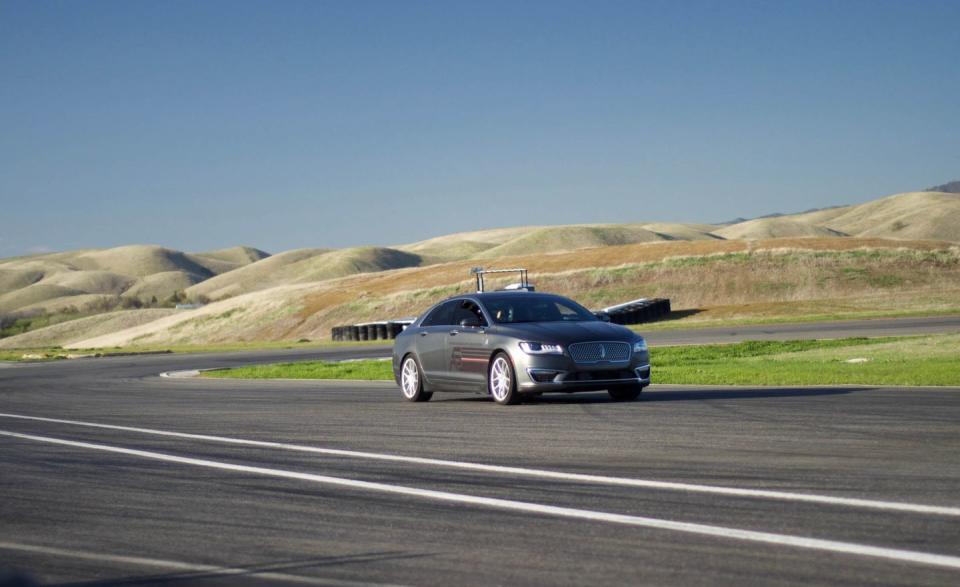
“We’re using a pure vision-based system that’s trained on tons of images,” Navarro said, “but it’s trained more on roads with lanes that are divided in the middle. This is not what a racetrack looks like. It’s not really designed for that. So it might stay in there?”
The Woodstock of Self-Driving
Held on a closed course, the Self Racing Cars event is designed to seek the answers to such questions. Ostensibly, the event involves competing for the fastest lap time completed entirely under autonomous control. There are other measures of success, which is loosely defined since the companies participating have different objectives. Narrowing the gap between the superior human lap times and those conducted autonomously is one. Getting around the 10-turn track without an intervention, as many were to learn, is itself a benchmark.
More broadly, Self Racing Cars leaves the stultifying Silicon Valley hype behind and instead melds a come-as-you-are spirit with a welcoming community of tinkerers. “I call this the Woodstock of self-driving cars,” said Stacey Randecker Bartlett, senior marketing manager at Renesas Electronics America, a semiconductor supplier that highlighted its connected-car tech at the event. “It’s wonderful to see so many companies stepping up and showing off their technologies. We’ve gotten to this point where it’s real.”
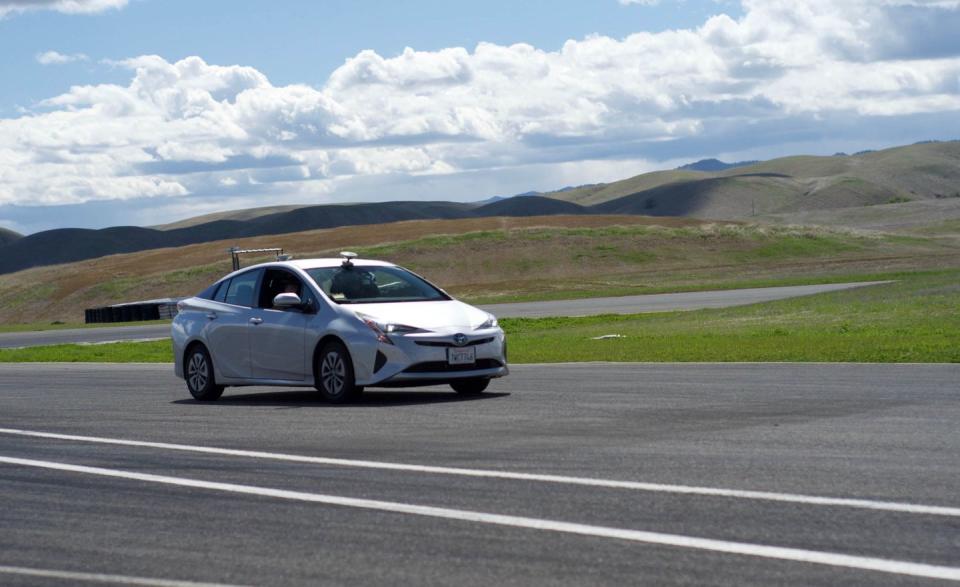
Other companies participating in some fashion included AutonomouStuff, a maker of research-and-development platforms for automated and driver-assist systems; Velodyne, a prominent manufacturer of lidar sensors that help automated systems perceive their road environment; and RightHook, a Silicon Valley startup run by two Ford veterans that specializes in testing automated systems through simulation.
Top contenders for the fastest lap are Comma.ai, the George Hotz–led startup that specializes in aftermarket products; Udacity, the online tech-focused school founded by Google’s Sebastian Thrun; and Swerve.ai, a self-driving-focused startup of former Volkswagen engineers who are developing collision-avoidance software.
Using an Acura ILX, Swerve.ai completed a lap in two minutes, six seconds at about midday on the first day of the event, establishing a formidable mark that put immediate pressure on everyone else. Last year, Point One Navigation took top honors with a lap time of 3:37, and the one-year difference has everyone chattering. It’s an indication of just how quickly experts and the curious alike are honing their self-driving chops.
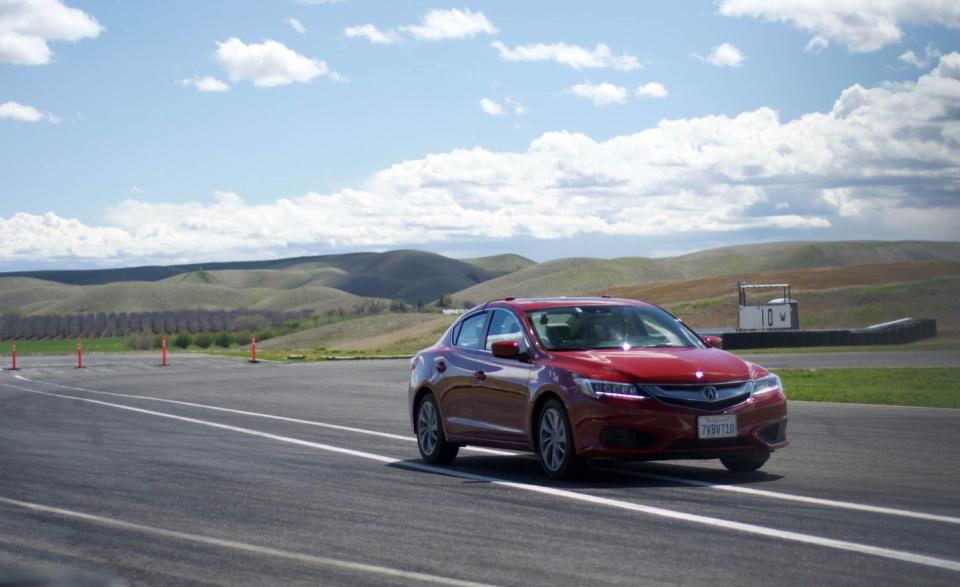
Innovation through Racing
That’s one reason why Joshua Schachter put this event together in the first place. An entrepreneur who founded social bookmarking service Del.icio.us, Schachter is a Bay Area investor who has taken an interest in advanced transportation developments, including autonomous vehicles. He’s also a passionate car enthusiast who races an Aston Martin Vantage and a Mazda Miata. It’d be simple enough to think of Self Racing Cars, now in its third year, as a merger of his two particular interests. But that sells it short. He wants to press the accelerator on transportation innovations.
“How does innovation happen? It’s when we really push,” he said. “[With] these cars, you learn what they do at their limits. But the way the industry works now is that it’s heavily regulated. So I’m looking at this a different way, and that’s figuring out how to build the fastest thing you can, or the smartest thing you can. Or, in terms of safety, the safest thing we can. If you look at the history of safety in automobiles, it comes out of racing. So we’re out here trying to figure out how to make this better and more reliable.”
Although public roads are awash with automated-vehicle tests, precious few opportunities exist to actually test these cars at high speeds and in adverse conditions. But that’s merely one aspect of what has drawn people from around the globe to this racetrack, carved into the side of the Northern California foothills. On the surface, Schachter is prodding people to test their systems. Beyond that, he wants to prod them to think bigger than automated cars.
“Autonomous cars are the obvious next step. And I think we’re going to see something really weird and big unfold over the next few decades,” he said.
Those transformations, he posits, may one day include lidar sensors not only in cars but affixed to traffic lights, where they can provide information to connected cars on road obstacles that lie beyond the sightlines of their own sensors. They might include a shipping industry upended by the blending of autonomous ground and air vehicles. That future may include rampant cybersecurity threats, which could be modeled in a future Self Racing Cars event in which automated vehicles must fend off a team of hackers trying to infiltrate them and spoil the race.
For now, simply completing a lap without the hassle of nefarious cyber opponents remains a challenging pursuit.
From Small Things, Big Things One Day Come
Throughout the weekend, teams ran their laps during allotted time slots, then hurried back to the paddock to tweak their software based on their latest learnings, hoping to whittle a few seconds from their times the next time around. Far from the hype of Silicon Valley, this is self-driving technology at its most elemental.
By Sunday afternoon, the field was still chasing Swerve.ai’s early lap time, and only Comma.ai stayed within striking distance. The team of six kept inching their car closer, running laps that progressed from 2:13 to 2:10 to 2:07. In addition to nearly catching the leader, they were narrowing the gap on another mark that was just as important. One of the team members clocked a lap time of 1:50 during a very human lap earlier in the weekend; the autonomous improvements measure just how close they’re getting to human-level performance.
“This is a good exercise,” said Riccardo Biasini, Comma’s control lead. “It has to do more with control than perception. If we do a good job with that, we can push it more to the limits, which is what we want to see. How the car behaves at low speeds is very predictable. But how does it react when the conditions are less predictable and harder to model?”
Alas, there’s one condition they could not predict. Whenever the traction control on their Toyota Prius activates, it kicks Comma out of the drive-by-wire system. They’ve spent much of the day trying to circumvent that problem. Despite their improvements, it’s never quite enough to surmount the lead. At the end, Swerve.ai’s lap of 2:06 stands as the winner.
As for Udacity, the team integrated its software into its loaner Prius within 30 minutes, a fortuitous development. But it took longer for the camera-only system to figure its way around the racetrack. As a result, Udacity’s car ran between 15 and 20 mph, which was slower than their results the year prior. But for Udacity, time was never really the point.
“Even though this will never end up in a production vehicle, this helps us explore new areas and techniques, and realize why does this work and why does that not work,” said Udacity instructor Navarro, who is a former Lockheed Martin engineer. “It’s a lot of fun, and it brings together people who have never interacted with each other before.”
In Texas, Drive.ai’s Self-Driving Vehicles Will Take Office Workers to Lunch
What We Can Learn about Autonomous Progress from California Disengagement Reports
A bunch of people scrambling to rewrite code in the corner hardly sounds like much. But by the end of the weekend, Navarro had invitations to write a paper on his approach and present it at the QCon.ai conference in San Francisco and the SAE World Congress in Detroit. His presentation will focus on bootstrapping a self-driving vehicle from scratch in a single weekend and seeing how far he can ride it. It could just as well be about searching for the next big autonomous thing in Silicon Valley and instead finding something close at an unassuming Northern California racetrack.
You Might Also Like

 Yahoo Autos
Yahoo Autos 